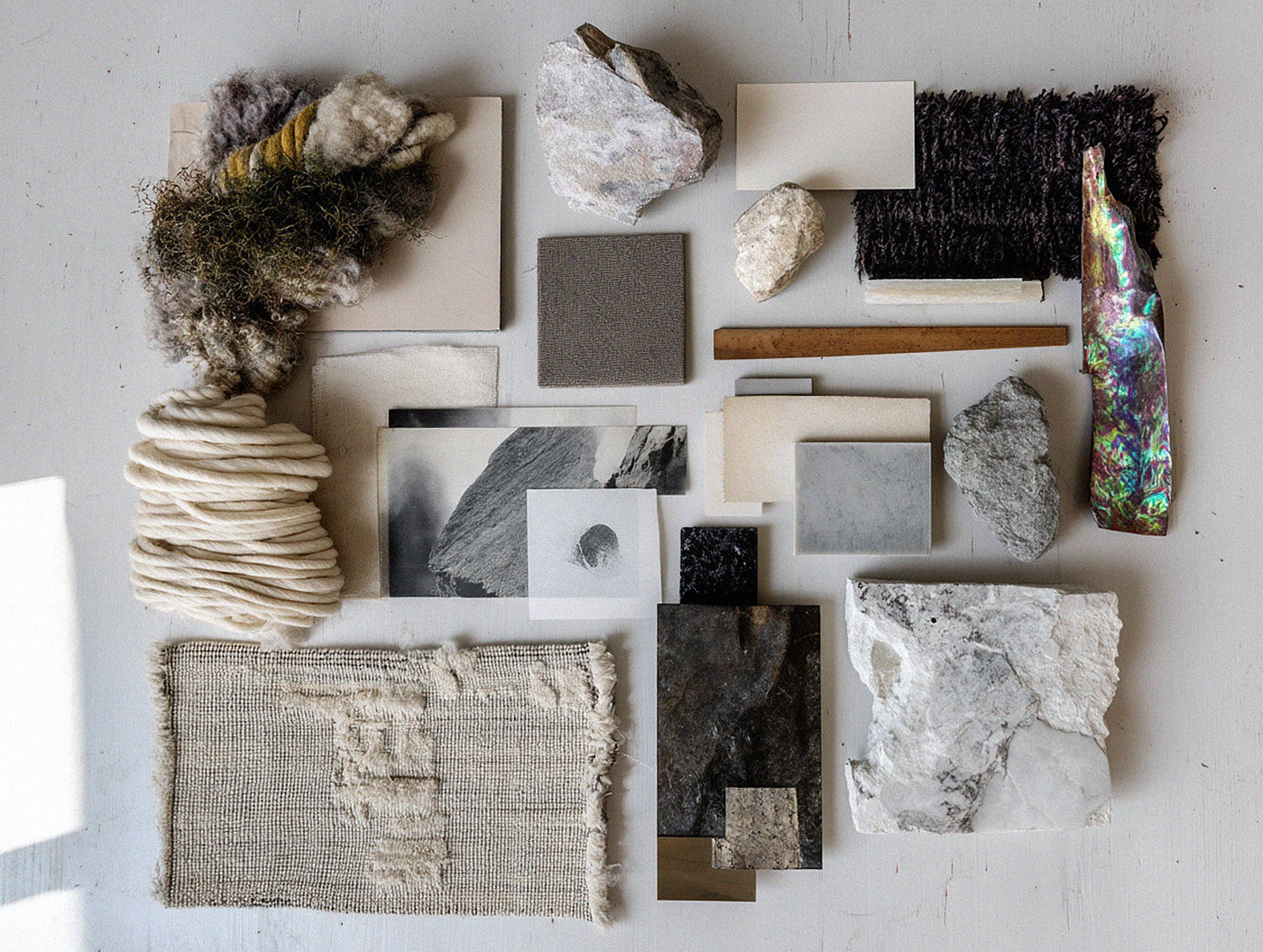CALLE HENZEL, Untitled 136 (Assemblage), 2020 / 2025
In the Works: The Atelier Editions — a curatorial platform inviting architects and designers to reimagine the handmade rug as sculptural form. Blurring the boundaries between art, architecture, and function, each edition introduces limited works that explore material, gesture, and surface.
At its core, The Atelier Editions is an artistic initiative — a space for experimentation, dialogue, and exchange. Each invited contribution is chosen not for its alignment with trends or market demands, but for its creative resonance: a personal, experimental, or poetic exploration of the textile medium. The aim is to cultivate a collection of works that challenge perception, spark conversation, and expand the handmade rug’s place within the fields of contemporary art, design, and architecture.
Conceived as a living, evolving platform, The Atelier Editions brings together AD100 architects, influential contemporary and cultural voices, internationally recognized designers, and emerging talents whose work pushes the boundaries of form, material, and concept. This ongoing expansion is intentional, fostering a dialogue that is both rigorous and open-ended. Each rug is envisioned as more than a functional object — it becomes a tactile field, a sculptural presence, and a site where ideas are woven directly into the work. Through unconventional compositions, intricate detailing, and unexpected material choices, these pieces affirm a shared belief: that the rug is not merely a surface, but a ground for cultural and artistic meaning.
The Atelier Editions exists to support these explorations — offering contributors the freedom, resources, and context to realize their vision without compromise. In doing so, it positions the handmade rug as a legitimate medium of artistic expression, in constant dialogue with the worlds of art, design, and architecture.
Participating Artists
Sacha Andraos, Lorenzo Scisciani, Salvatore Morales (Milan / London), Alexander Díaz Andersson (Mexico City), Andrée Cooke (London), Adam Court (Cape Town), Pietro Franceschini (Milan / New York), Annysa LaMantia (Atlanta / New York), Fernanda Marques (São Paulo), Giovanni Pagani (Milan), Fernando Mastrangelo (New York) and Suchi Reddy (New York)
Atelier Bowy C.D. – A curatorial space within Henzel Studio, where parallel practices converge through experimental, contemplative, and process-driven design. (ABCD) creates contemporary handmade rugs that move fluidly between tradition and innovation. With the sensibility of a curatorial studio, each piece is treated as a site-specific work—merging artisanal techniques with a refined, modern language.
Designed for both residential and contract environments, these rugs are not merely decorative objects, but material expressions of craftsmanship, context, and enduring cultural dialogue.
Atelier Bowy C.D. emerged as an experimental extension of Henzel Studio, founded during one of Calle Henzel’s prolonged creative residencies in New York’s Bowery district. Now based in Greater Copenhagen, the studio continues to explore the intersection of contemporary design and textile through a curatorial lens.
Conceived under the artistic direction of Calle Henzel—whose multi-decade practice has consistently blurred the boundaries between art, design, and craft—Atelier Bowy C.D. operates with the sensibility of a research-led studio. While Henzel Studio is widely recognized for its collaborations with leading contemporary artists, Atelier Bowy C.D. follows a parallel yet distinct path, offering architects and designers the opportunity to explore the handmade rug through their own design language.
The studio’s output is twofold: it serves both as a site for Henzel’s ongoing formal and material experimentation, and as a platform for quieter, distilled compositions developed by the Atelier’s in-house design team. Together, these parallel strands yield a body of work that moves between innovation and restraint—always guided by process, material sensitivity, and contextual depth.
Gallery partners:
Kalkeriet Contemporary
Galerie Philia
Artistic direction by Calle Henzel
Calle Henzel, the visionary founder and creative force behind Henzel Studio, has dedicated almost three decades to translating his artistic talent as a painter and collage artist into the realm of luxury rug design. His innovative approach has propelled Henzel Studio to the forefront of the industry, solidifying its position as one of the most avant-garde brands in contemporary rug design. Henzel's artistic process is characterized by an unwavering commitment to originality, constantly pushing the boundaries of traditional rug design through meticulous research and bold experimentation. His work defies conventional norms of subject matter, shape, finishes, and treatments, blurring the lines between art and design. With meticulous attention to detail and an uncompromising pursuit of excellence, Henzel has curated a portfolio of designs that captivate and inspire.
Through collaborations with luminaries in contemporary art such as Richard Prince, Nan Goldin, and Juergen Teller, Henzel has brought his distinctive artistic vision to esteemed venues worldwide, including MOCA, Katonah Museum of Art and The Goss-Michael Foundation.
In collaboration with Kalkeriet Contemporary and French artist Claude Guillaumin (b. 1946), we are pleased to present a limited-edition capsule collection exploring the intersection of photography, materiality, and applied form. Born in France and long based in New York City, Guillaumin’s photographic practice spans more than five decades, centering on themes of intimacy, urban life, and visual culture
Recognized early on for his editorial work in the 1970s and ’80s, Guillaumin later turned his focus toward portraying everyday women — privileging presence and authenticity over idealization. His compositions move between unguarded encounters and formal precision, offering a nuanced portrait of contemporary life. This capsule — developed in close collaboration with the artist — includes a curated selection of limited-edition photographs available through Kalkeriet Contemporary, alongside a series of chromogenic-printed rugs. Translated from photographic image into tactile object, the rugs reimagine Guillaumin’s visual narratives as immersive design elements. Designed for both indoor and outdoor settings, each piece is customizable within the original artwork’s proportions. Non-slip backings ensure functionality, while advanced print techniques retain the tonal depth and material complexity of the original works.

















